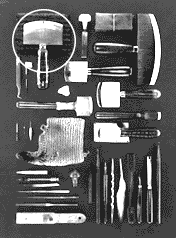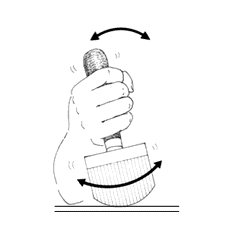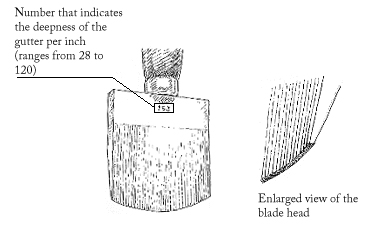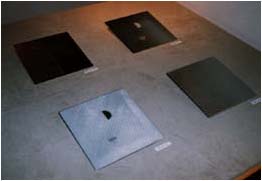About mezzotint
“Mezzotint”
[meniere noire (Fr.), Schabkunst (Ger.)]
Mezzotint is a printing technique developed by Ludwig von Siegen in the mid-17th century.
As indicated by the word “mezzo”, meaning halftone in Italian, mezzotint allows subtle shades from black to white to be expressed. Its suitability for creating reproductions of famous artworks (oil paintings) led to its popularization particularly in England (where it is also known as “English manner”) in the 17th-18th centuries.
The advent of the camera at the end of the 19th century saw mezzotint become an outdated technique before it had gained status as a form of artistic expression in its own right.
Living in Paris, HAMAGUCHI undertook to find tools and search for techniques himself, eventually bringing a method for color expression to the world of mezzotint which had been positioned as a monochromatic technique. This enabled him to explore much richer form of artistic expression.
|
Tools of HAMAGUCHI Yozo for making mezzotint prints. The work gloves and woolen covers for protecting the important tips of the tools.
|
Beruso [berceau (French)] or rocker
|
|
|






